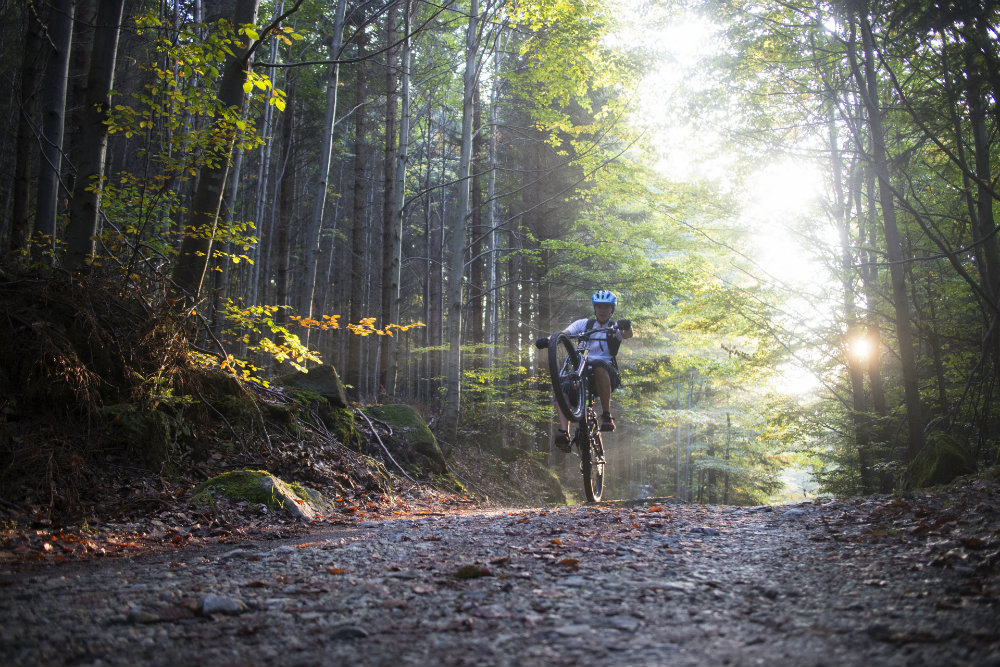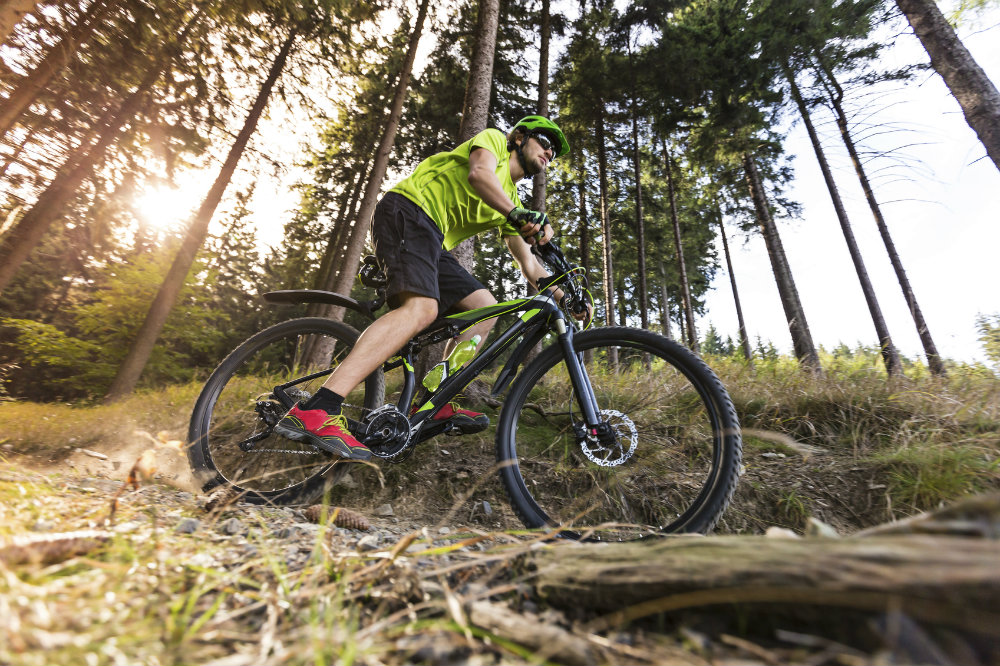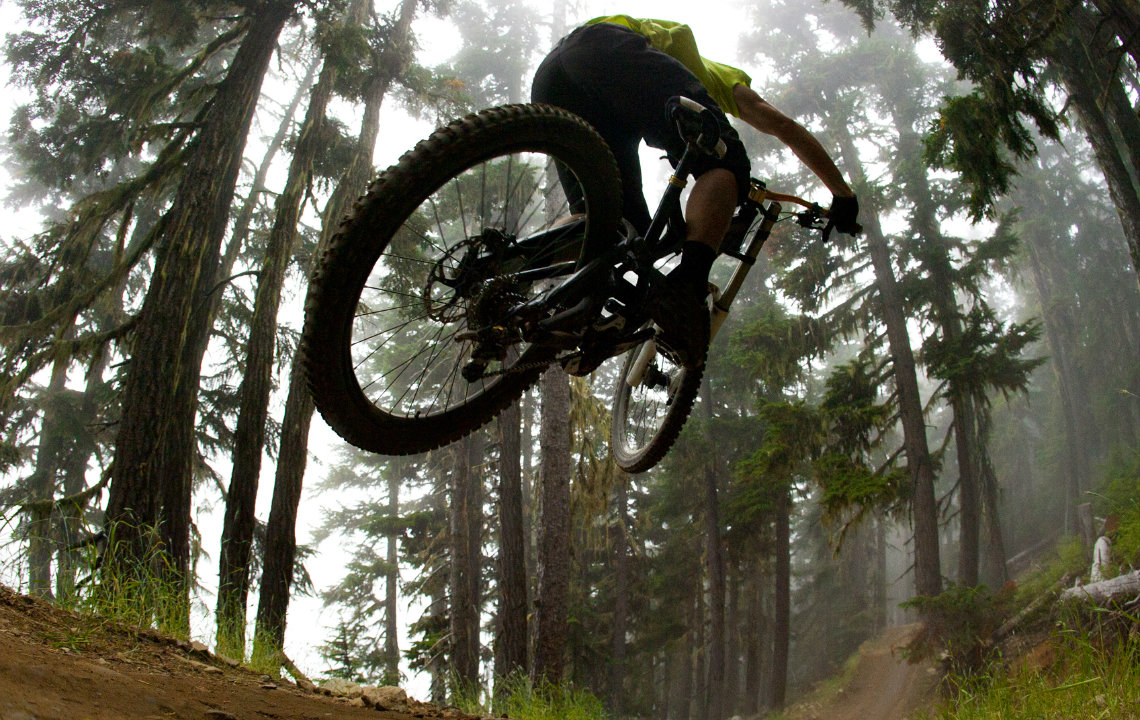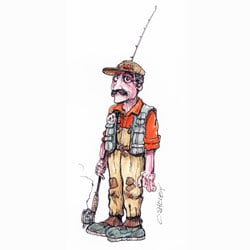Mountain bikers have their own language, equipment and tricks to get the best out of their sport - and to avoid the worst. Humor writer Jim Mize explains.
The vocabulary of a sport tells you a lot about it and each has its own unique words. Take turkey hunting, for instance. Strut, cluck and fly-down cackle have nothing to do with dances, chickens or laughing while you crop-dust. Mountain biking, likewise, has its unique vocabulary, with most of it describing methods of crashing.
Hang out with mountain bikers for fifteen minutes and you’ll hear them using words like “mud-diving” and “gravity checks,” two approaches for coming into close contact with dirt. As you pedal up and down mountains, you will likely add a few of your own words to the list. I know I have.
The vocabulary of a mountain biker
Examples of mountain biking slang include:
 Playing Possum - When you wobble down a mountain, wreck and get run over by the bike behind you.
Playing Possum - When you wobble down a mountain, wreck and get run over by the bike behind you.
Pulling a Brer Rabbit - Leaving the trail and losing it in a briar patch.
Wile E. Coyote - Sailing over a cliff.
Getting sawdusted - Smashing into a tree.
Gone fishin’ - Losing it in a creek.
Usually, these terms come to mind while I am summoning the strength to get up. You can see from their jolly nature just how much fun wrecks can be.
Even beginners to this sport get clues from the start. Take trail guides, for example. One review I read praised a trail section where “hikers are advised to walk around.” Let’s see if I’ve got this straight: I’m supposed to ride a bike in places normal people can’t walk? Right.
Other trails that made the top of the list were described as steep and zigzagging, with leg-burning climbs, hair-raising drops and last but not least, a word of caution to watch out for moose. Sounds like the ideal trail involves pain, fear and wild animals.

Mountain biking equipment that could save your hide
Luckily, equipment companies make special gear for just these occasions, except for the one involving the moose.
For instance, every biker must wear a helmet, which should send a clear message that landing on you feet is not always an option.
Biking gloves are common, not so much for gripping as protection. Sticks and rocks have a tendency to rap your knuckles harder than a slap-happy school teacher with a new yard stick.
Mountain bikers also wear eye protection, even though this crowd strikes me as the sort to run with scissors.
The bikes themselves sound like they are assembled from parts supplied by NASA. On second thought, all that rocket stuff was made by the cheapest bidder. Bike parts definitely are not.
Mountain biking techniques to wreck "safely"
Technique is critical in mountain biking and most of it involves how best to wreck.
1. Experts advise watching where you fall. If you can’t land on a mattress, pick the best spot you can find.
2. Next, protect your head with your arms. Presumably, this is because you have one head and two arms, so obviously your head is harder to do without.
3. Once you’re crashing, try to land on your side, rather than your chest or back. Medical specialists for these parts of your body cost less.
4. Then, get out of the way of other bikes. The problem with leading is that once you wreck, you become everyone else’s speed bump.

Some of the advice covers rare possibilities, but it can be good to know. One of my favorite tips is for confronting a mountain lion on your bike.
First, ask him to get off.
In addition, avoid dressing like a deer or running away, especially if you are the slowest in your group. Besides, you don’t want him to work up an appetite.
Once you hold your ground, try to stand as tall and appear as large as possible. This will either intimidate the lion or convince him you’re not bite-size.
As a last resort, fight back with sticks and rocks. These should be easy for you to find, since you’ve been running into them all day anyway.
In conclusion, despite all the bumps and bruises, mountain biking is the kind of sport that gets into your blood. You just want to be careful enough that it doesn’t drain any.

























